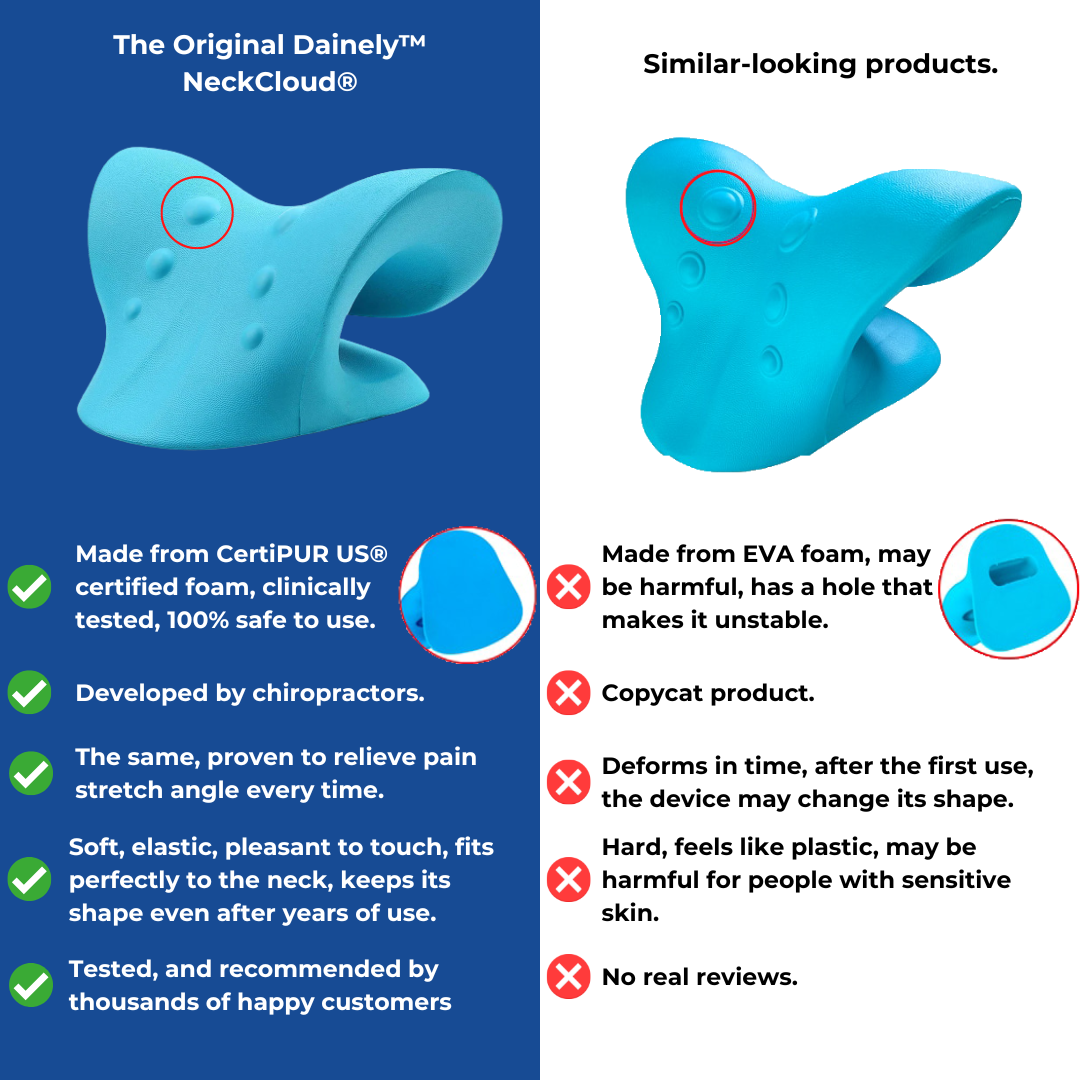Discover Neck Cloud: A Basic Remedy for Neck Discomfort and Stress
Neck Discomfort in the Workplace: Determining Threat Aspects and Implementing Ergonomic Solutions
Neck pain in the office is a widespread concern that can affect worker wellness and performance. By recognizing the numerous risk elements contributing to neck pain and applying ergonomic remedies, companies can create a more conducive work setting.
Usual Root Causes Of Neck Discomfort
Neck pain in the office is a prevalent problem that can be connected to numerous common reasons. Among the key culprits is bad stance, which typically arises from prolonged durations of sitting incorrectly at a desk or workstation. This can cause strain on the neck muscular tissues and joints, triggering pain and discomfort. In addition, recurring motions such as frequent flexing, turning, or reaching can also add to neck pain over time. Stressing the neck by holding it in an unpleasant setting for extended durations, like nestling the phone in between the ear and shoulder, can worsen the issue (neck cloud).

Ergonomic Danger Elements
Poor ergonomics in the office can substantially add to neck discomfort among workers. Factors such as inappropriate workdesk height, poor chair support, and unpleasant positioning of computer displays can all play a function in the development of neck pain. When employees are compelled to sit for prolonged durations in positions that stress their neck muscular tissues, it can result in rigidity, soreness, and a lot more serious musculoskeletal problems with time.
Furthermore, bad ergonomic techniques can result in workers taking on awkward poses while functioning, such as craning their necks to see a computer screen or reaching uncomfortably for a computer mouse or key-board. neck cloud. These unnatural settings and recurring activities can put undue tension on the neck and bordering muscular tissues, leading to pain and reduced performance

Workdesk Arrangement Recommendations
To minimize the risk of neck pain and discomfort, there are several workdesk configuration suggestions that workers ought to consider. Guarantee that the computer monitor is website link placed at eye degree to stop straining the neck by looking up or down.
It is also vital to have adequate lights to minimize eye stress, as squinting or leaning forward can bring about neck stress. Organize the workdesk design to keep often used things within arm's reach, restricting the need for recurring twisting or reaching motions. By executing these workdesk configuration recommendations, staff members can create an extra ergonomic office that supports neck health and wellness and reduces the threat of developing work-related neck pain.
Extending and Exercise Tips
Straightforward desk-friendly stretches can assist minimize neck pain and stop rigidity. Neck rolls, shoulder shrugs, and gentle side-to-side neck stretches are reliable in alleviating stress.
It is essential to take time-outs throughout the day to execute these exercises. Setting suggestions or making use of apps that trigger activity can help establish a routine extending routine. It's essential to pay attention to your body and avoid overstretching, particularly if you are new to these workouts. Uniformity is key, so objective to integrate extending and workout right into your daily work routine. By focusing on these tasks, you can boost your physical well-being, minimize the danger of neck discomfort, and enhance your total efficiency in the office.
Importance of Routine Breaks
In a hectic workplace where demands can add to physical stress like neck pain, establishing a routine that stresses the importance of regular breaks is vital (neck cloud). Taking routine breaks throughout the workday is vital for stopping and easing neck pain. Long term periods of resting or recurring tasks can lead to muscular tissue tension and rigidity in the neck and shoulders. By including short breaks right into the job routine, staff members can minimize the risk of creating neck pain and improve total comfort and performance.
These breaks can also serve as an opportunity for workers to exercise leisure strategies or mild neck stretches, further promoting bone and joint wellness. Applying a society that values and focuses on regular breaks can have a significant impact on decreasing neck discomfort and enhancing Check This Out total health in the office.
Verdict
In conclusion, dealing with ergonomic danger variables and implementing proper workstation configurations are crucial in lowering neck discomfort in the office. By advertising excellent pose, supplying ample assistance, and motivating normal breaks and stretches, companies can produce a healthier and more effective job atmosphere for workers. Bonuses Prioritizing worker well-being with ergonomic options is crucial to avoid pain and enhancing general work environment contentment.
Neck pain in the workplace is a prevalent problem that can affect worker wellness and efficiency. By recognizing and addressing these usual causes of neck pain in the office, employers can take positive steps to create an extra ergonomic and comfy work environment for their staff members.
Poor functional designs in the workplace can dramatically contribute to neck discomfort among staff members. By carrying out these desk configuration recommendations, staff members can create an extra ergonomic work area that sustains neck health and wellness and lowers the danger of creating job-related neck discomfort.
Neck rolls, shoulder shrugs, and gentle side-to-side neck stretches are reliable in easing stress.